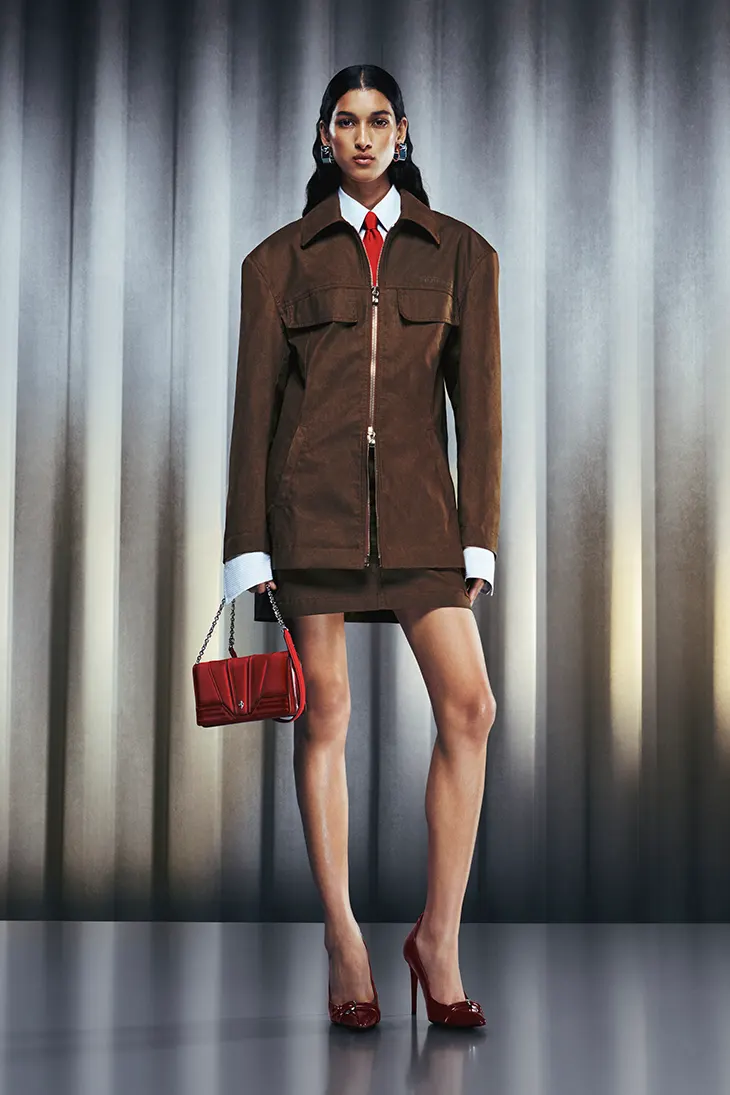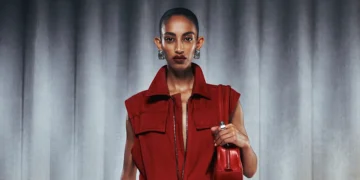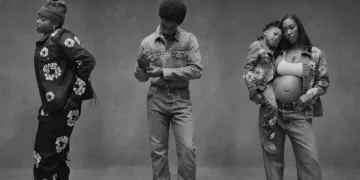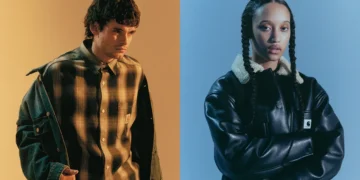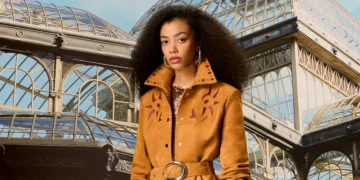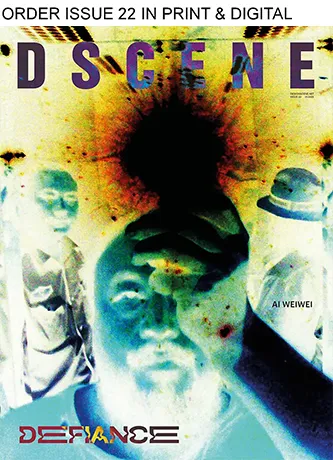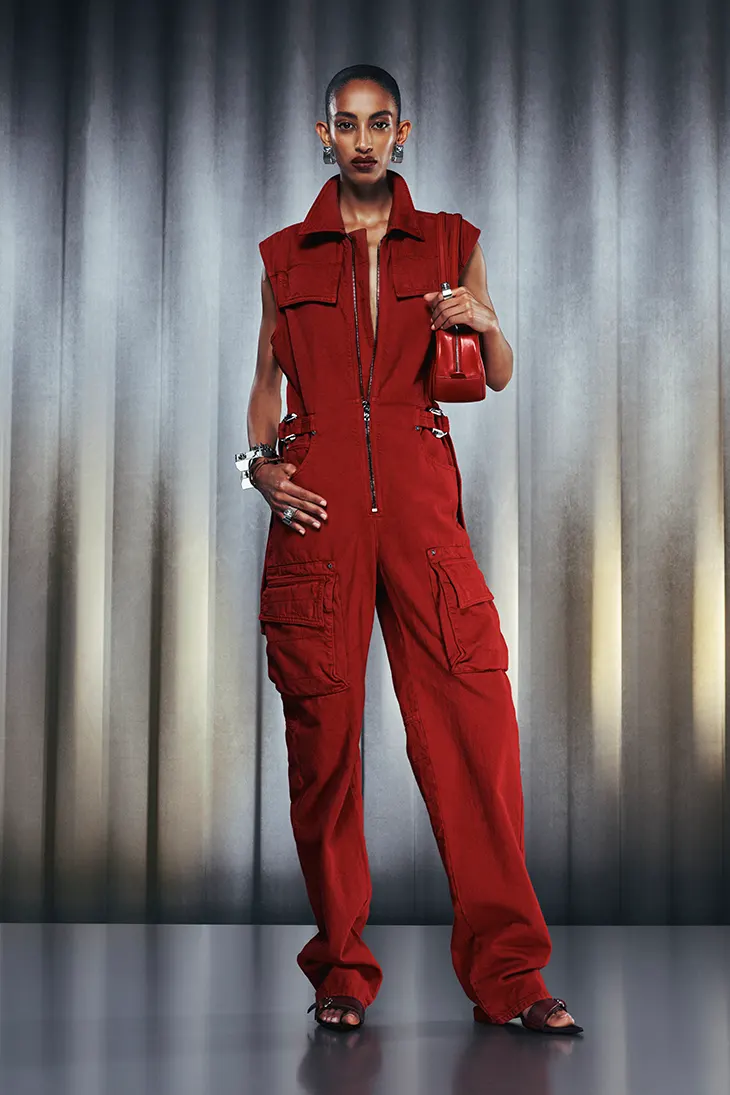
Ferrari turns its attention to the workshop, its officina, for Resort 2026, grounding the new collection in the energy of craft, labor, and design. The clothes reference those who shape the machines: engineers, assemblers, and users. From that shared foundation, the brand constructs a wardrobe for both women and men that evolves through observation and carries a tactile charge. The process of creation mirrors that of the vehicles, thought meets form through practiced precision.
Resort 2026 grows out of the previous collection, extending its language instead of rewriting it. The result delivers shifts in material, palette, and silhouette across three clear stages. Each one builds on the last, drawing its energy from the motions, tools, and textures of the workshop.
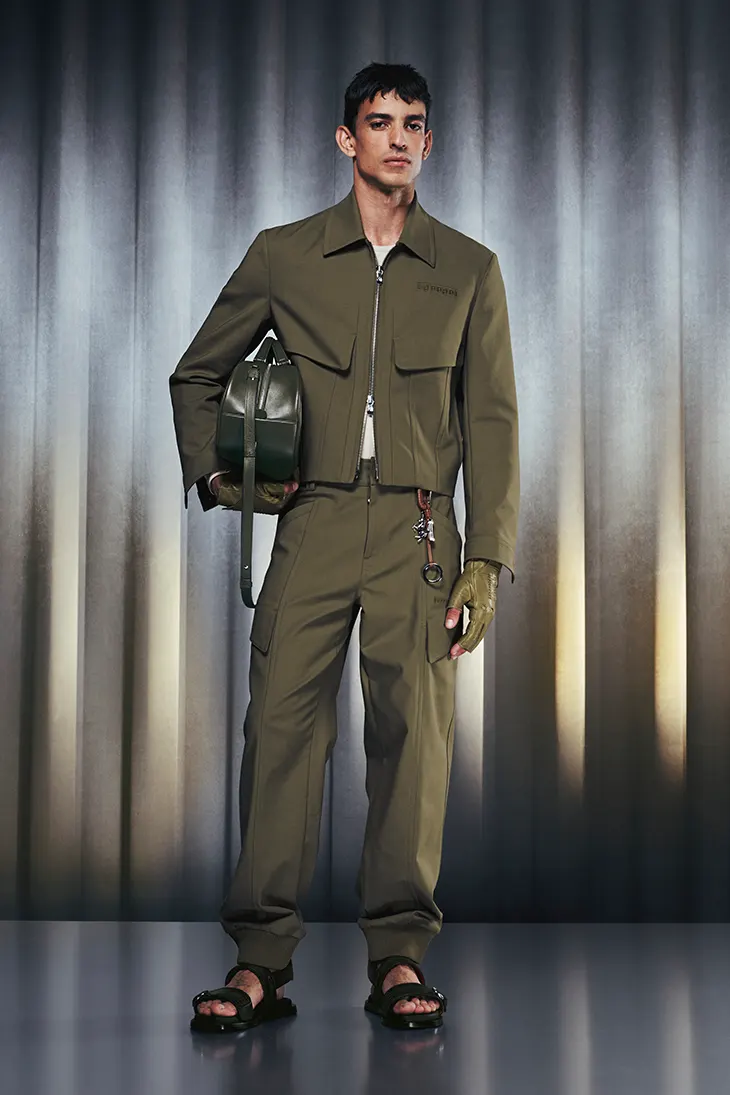

The first stage arrives saturated. Deep red tones sit across weighty textiles: coated canvas, buffered leather, acid-treated denim. These fabrics feel worked, rubbed, pressed, pushed. The visual weight sets a grounded tone, pulling from industrial wear and grounding the body in the early part of the collection.
As the progression continues, the forms begin to lighten. Tailoring steps in through Ferrari’s Q-CYCLE program, arriving in clay shades and cool-toned technical canvas. Boilery elements such as jumpsuits and work skirts echo factory silhouettes. Light blue poplins striped with jacquard pull from white-collar uniforms. These pieces carry less heft but retain utility, delivering an interpretation of everyday wear that feels considered.
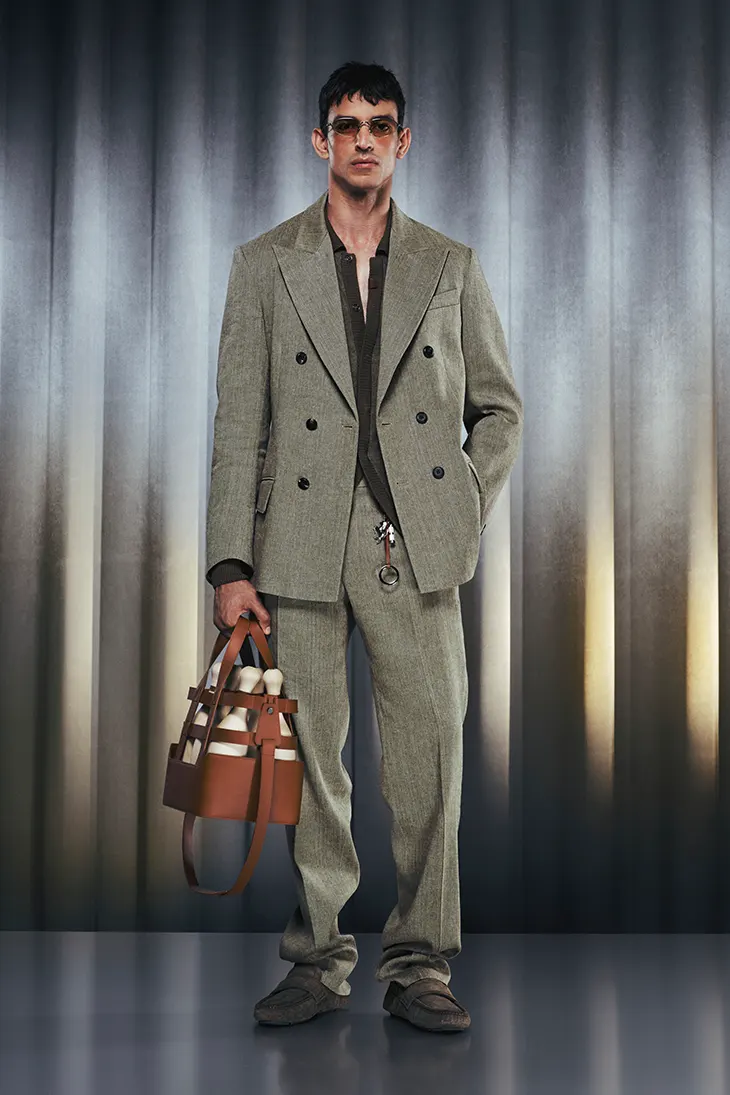
The third movement floats. Silk printed with unreleased scarf designs from the 1980s enters in Ferrari’s house red. Hemp, left raw in color, brushes against the skin. Ultra-light leather stretches over new volumes, echoing the airiness of summer. Black surfaces return as accents, providing contrast without overtaking. Across each section, the materials push the narrative forward, marking shifts in both mood and function.
The shapes across Resort 2026 do not rely on softness. Skirt suits and pantsuits come with clean lines and clear intent. Trench coats, blousons, and wide trousers extend the body rather than hiding it. Wings trace across sleeves and overalls. These visual details elevate the silhouette without excessive volume, offering structure without rigidity.
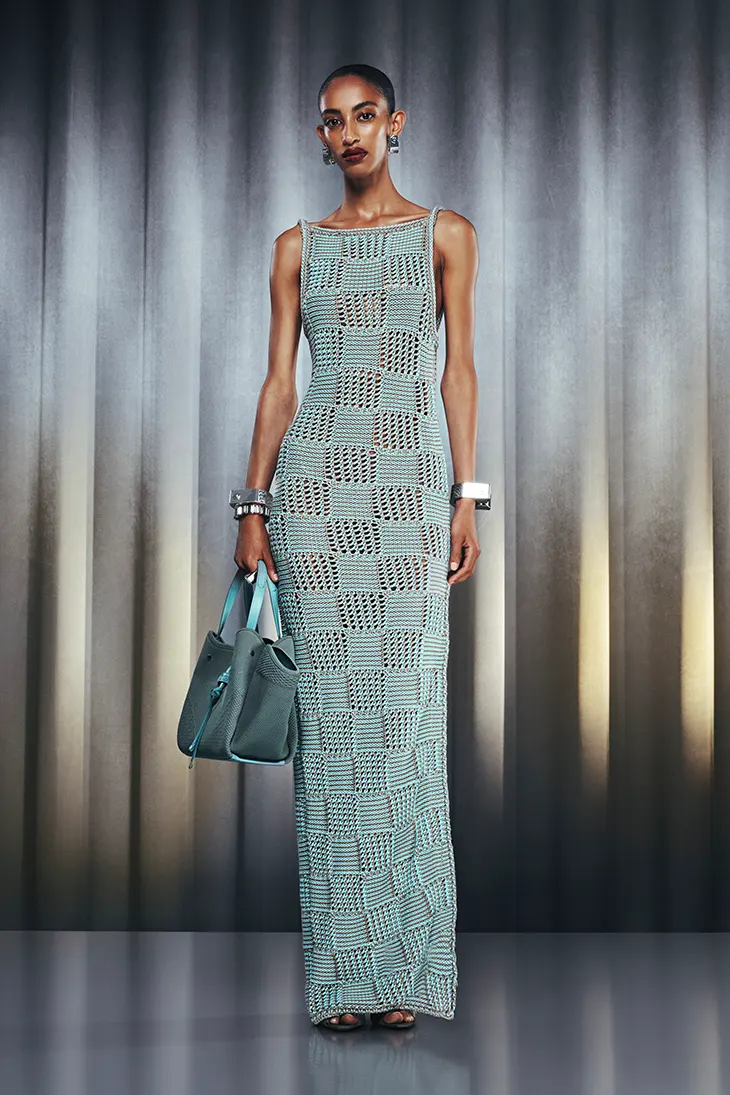
Fabrics echo references to movement and pragmatism. Large checks from driving gear reappear as thread-embroidered motifs on leather outerwear. Workwear denim maintains its function but shifts into more sculptural forms. Silk dresses and pants read as airflow, the suggestion of motion held against the skin.
Ferrari doesn’t step away from the workshop when it finishes with garments. Accessories carry the same cues. Padlocks, screws, and bolts reappear as charms and bijoux, offering subtle callbacks to the source material. The La Ferrari Dino bag enters with round edges and soft form. Other bags mimic tools in scale and shape, arriving as crossbody styles or larger sculpted versions. Shoes remain precise. Ballerina pumps and sabots feature knot motifs that mimic ties, connections, and tension.
